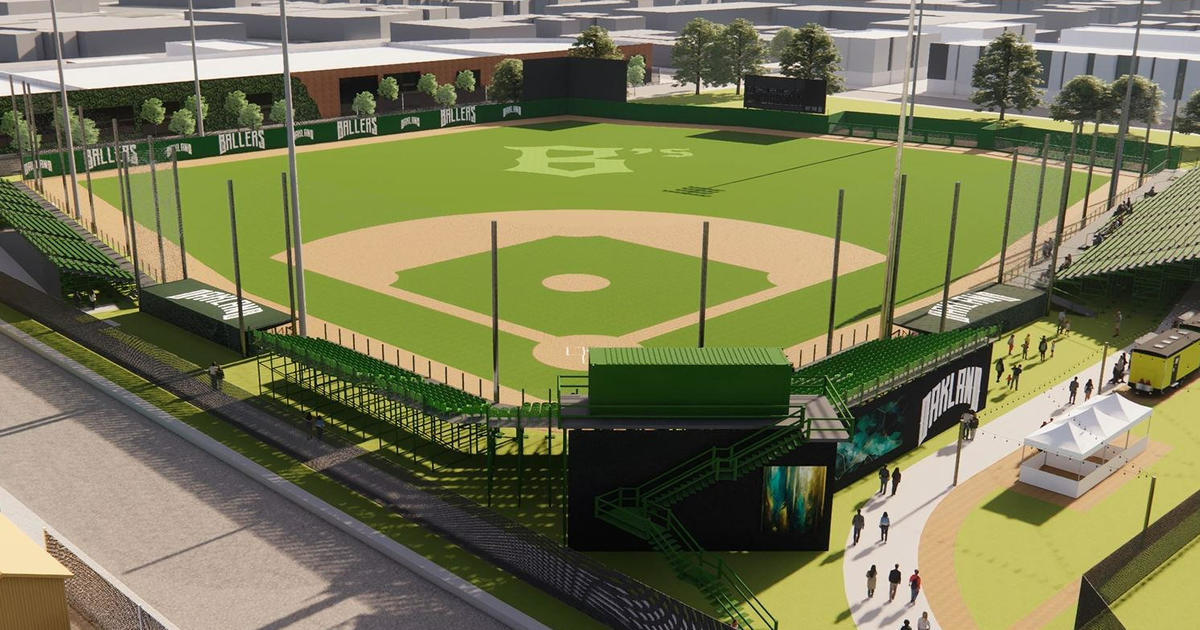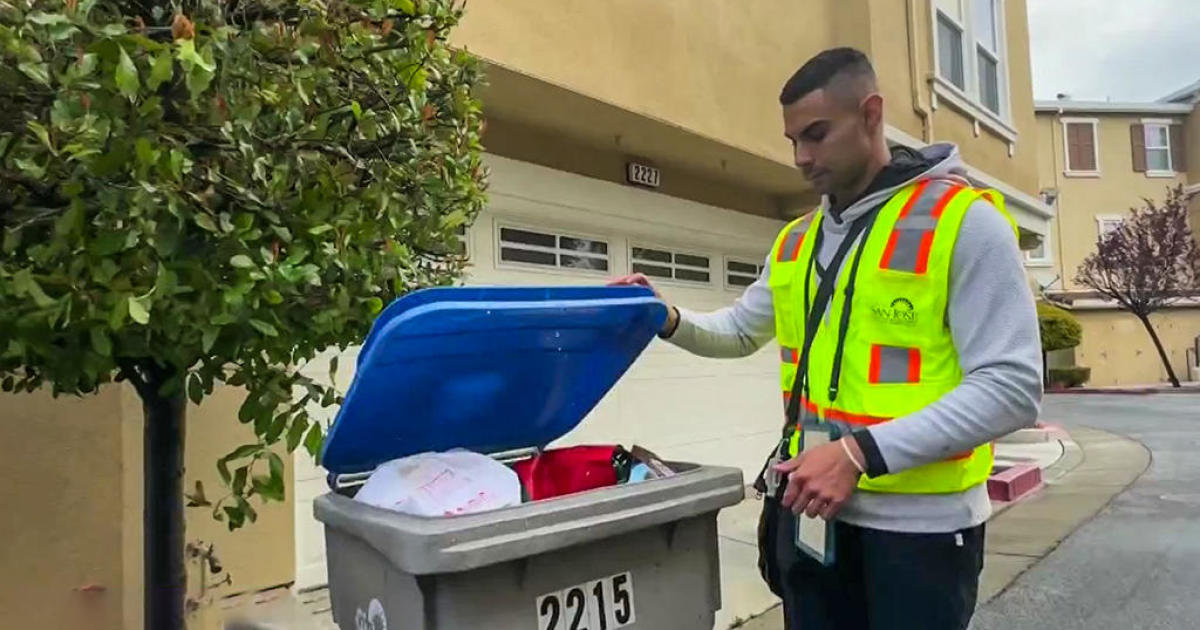KPIX At 70: Covering The 1989 Loma Prieta Earthquake
(KPIX 5) -- As part of our look back at 70 years of KPIX broadcasting, we remember the 15 seconds that changed our lives and served as a major wake-up call to anyone who lives in the Bay Area.
The date: October 17, 1989. The World Series was the Battle of the Bay with the Oakland A's versus the San Francisco Giants. If you were watching KPIX News at noon, you would have seen then-anchor Loren Nancarrow talking about the first game in the series to be played at Candlestick Park. It was Game 3; the Giants lost the first two games to the A's at the Coliseum.
"The San Francisco Giants play host to game three of the series tonight couldn't ask for a better day for the third day of the series – sunny," noted Nancarrow to our audience, live from the KPIX studios on the fifth floor of our building at 855 Battery St. While the series would be broadcast by a rival network, KPIX was ambitious. We staffed the series as if it were our own.
"I was not in the newsroom that day, I was at Candlestick Park," recalled reporter Barbara Rodgers.
Our team included anchor Wendy Tokuda. "I was field anchoring." said Tokuda. She was set up outside in the parking lot, full of notes, and background information. Her photographer was veteran news and sports photographer Al Lopez.
Also at Candlestick: sports director and anchor Wayne Walker, and as noted, Rodgers. Rodgers was supposed to go on vacation the next day. She had been covering the Giants' season, and went with the team to Chicago in the playoffs with the Cubs, traveling with the team on their plane.
Inside the park, waiting to watch the game, with a handful of peanuts, and a beer, a true legend.
"I had never been to a World Series, I was so excited," said San Francisco 49ers quarterback Joe Montana.
Montana and his wife Jennifer came to the park with their newborn baby Nathanial. They had left their younger girls with friends. Their first stop: a luxury box where 49ers owner Eddie DeBartolo Jr and his wife Candy were seated.
"We had just left Mr. and Mrs. DeBartolo's box. and I had Nathanial," remembered Jennifer.
Thousands of miles away in Washington DC, Rep. Leon Panetta was getting ready to watch the game. He and a handful of other Californian lawmakers were invited to watch the series at New York's Rep. Tom Downey's place. The group was among the 25 million viewers who watched the game on television. Panetta represented California's then -16th Congressional District, which included all of Monterey and San Benito counties, plus most of Santa Cruz County, including Loma Prieta.
"I was able to get a ticket to that series, but because I was in Washington I gave the ticket to my wife - there were several tickets and she brought my youngest son to the game," remembered Panetta.
The broadcast began with a taped recap of the first two games. The Montanas ran into their friend, the late 49ers wide receiver Dwight Clark who had since retired from football. He began to coo over the baby.
At 5:04 pm, everything changed.
"Dwight kissed Nathanial and the earthquake happened," said Jennifer.
"I was doing an interview with a fan and just as she was telling us how excited she was, we heard this roar and we both looked up because we thought it was a plane going overheard, that's what it sounded like," said Rogers. "But as soon as we looked up, we looked down at our feet, because we could feel the stadium actually shaking and we looked at each other and said 'Earthquake!'"
KPIX anchor and reporter Kate Kelly was on assignment near the Lefty O'Doul Bridge. When the quake hit, she wondered if the car had a flat or the bridge was going up. But then her eyes cast on a big 18-wheeler truck which was dramatically tilting back and forth, making a horrible sound as it smashed and broke a street lamp. She knew immediately it was a severe quake, and the crew headed back to the station, traveling down the Embarcadero.
At that time, the double-decker freeway along the Embarcadero, Interstate 480, took drivers to and from the Bay Bridge, from Battery and Broadway Streets. As Kelly was driving down the Embarcadero, she saw clouds of dust in the air, and concrete falling from the elevated freeway. People had streamed out of the Ferry Building, and were all pointing to the structure. Kelly and her photographer stayed in the lane furthest away from freeway, fearing it might fall.
"I kept a mental notebook of everything that I was witnessing, so I could inform our newsroom," said Kelly.
Back in DC, the lawmakers could not believe their eyes.
"We were watching the game and all of a sudden obviously the television went blank," said Panetta. He then tried to get hold of his wife, but could not. The phone lines were jammed.
A magnitude 6.9 quake had jolted the Bay Area It lasted about 15 seconds.
"It did shake, I mean it! It really shook," said Rodgers on that day as she debriefed Tokuda and Walker in the Candlestick parking lot.
"We were out in the parking lot and I remember watching those microwaves on top of the trucks start to swing … and the concrete was going like this," said Tokuda, waving her hands.
As for the Montanas, at first Joe was hesitant to leave. The lights in the stadium had gone back on, and he thought the game would resume. But,Jennifer had lived through a few quakes, and knew instinctively it was time to leave. The scene was at first full of panic: as fans streamed out through the tunnels in Candlestick. It took four hours to get home as the freeways were jammed.
On the Nimitz Freeway, Interstate 880, reporter Sherry Hu and her crew including photographer were on assignment in Oakland. They were tempted to swing by Jack London Square where reporter Doug Murphy was going to cover the crowd watching the game on large screen televisions. They would need to turn off on the Cypress Freeway - another elevated portion of I-880 that cut through West Oakland - and would drop them off to see Murphy.
At the last moment, they decided to get to work, and skipped taking the turnoff.
"As soon as we passed the turnoff to the Cypress Freeway, the truck started rolling like this and bouncing and the freeway looked like it was undulating," remembered Hu.
At KPIX on Battery Street, the quake knocked us off the air for eight minutes. Then, backup generators kicked in and provided enough juice for a makeshift studio. At the helm, legendary anchor Dave McElhatton. All of our ENG equipment was located in a narrow glass room. The air conditioning had stopped due to the power failure and the generators could not provide the power. KPIX engineers carefully smashed the glass with hammers to keep the air circulating so we could take in feeds and play back videotape.
Running into the station, dripping in sweat, veteran reporter Dave Bryan. He was with a crew in the financial district and saw debris all over the streets: shattered windows as well as brick facades tumbling off of ornate buildings.
Bryan caught his breath, took a seat next to Mac at our update desk, and told viewers what he saw. Then, video from Chopper 5 came in and our jaws dropped.
The Cypress Freeway had collapsed: about a mile and half of a freeway was no longer. Employees from a tire shop came out from their building and jumped in to help. Murphy was already on the scene, leaving Jack London Square with his photographer to document the horrible devastation. One of the shop workers climbed up the twisted, crumbling structure and tried to help. He told Murphy that there were a lot of smashed cars and dead bodies, but some individuals who were alive and needed immediate rescue.
"Two kids up there ... they're really hurt," said the man.
The collapse of the Cypress killed 41 people. KPIX interviewed Chris Mitchell, who was in the lower part of the Cypress. His car started to vibrate and he thought he had a flat tire. Then he saw the freeway begin to tumble down in front of his eyes, trapping him in his car. He explained how he saw the freeway falling down from in front in a big wave, and that he survived because when the structure fell on it, he was between cross members it created a small little space for him to live. "I hit the lotto or whatever," he said. He was able to kick out the back window of his car to escape.
The epicenter was near Loma Prieta Peak in the Santa Cruz Mountains, 50 to 60 miles away from downtown San Francisco. Damage was heavy in Santa Cruz, but imagine if the area was more populated. A total of 63 people died in the quake, more than 3,500 people were hurt.
Also from Chopper 5, our viewers and the newsroom saw how a section of the Bay Bridge collapsed. One car plunged over the fallen section of roadway, killing the driver named Anamafi Moala, and seriously injuring her brother who was her passenger.
They were traveling the opposite way on the bridge after being directed by emergency workers, who were trying to evacuate drivers were stuck on the bridge
The Marina District in San Francisco was devastated. A ruptured gas main caused a fire which residents helped fight. The hydrants stopped working, so a fireboat named the Phoenix which was in the Bay in front of the district, began pumping bay water to the fire engines, which in turn pumped waters to the hoses. The fire destroyed four buildings while the quake caused several other buildings to collapse. More than 70 buildings were destroyed or rendered uninhabitable.
Back in Washington, Congressman Panetta asked President Bush for a plane to head immediately back to the Bay Area, where he assessed the damage and helped to pull together state, federal and local agencies to provide assistance. Before he left, he got a call from his wife who told him she and their son had safely made it back home to the Carmel Valley.
Loma Prieta ended decades of earthquake tranquility in the Bay Area. The last major quake was in the region was the 1906 San Francisco earthquake.
The good news: "People really pulled together," said Tokuda.
The big question: Are you ready for the next big one? Here are some links to help you:
https://sfdbi.org/emergency-preparedness
https://earthquake.usgs.gov/learn/preparedness.php



